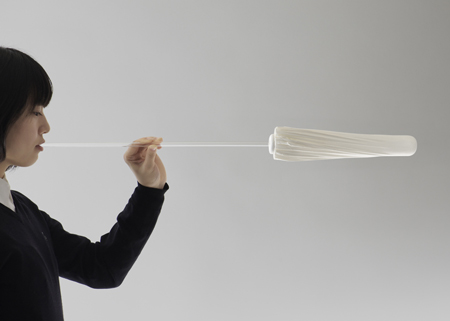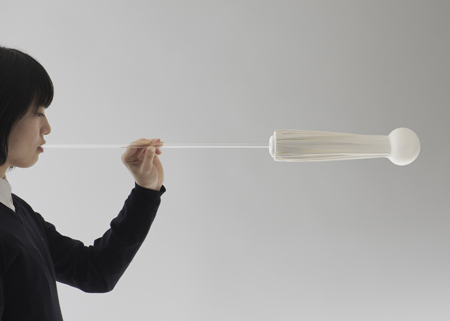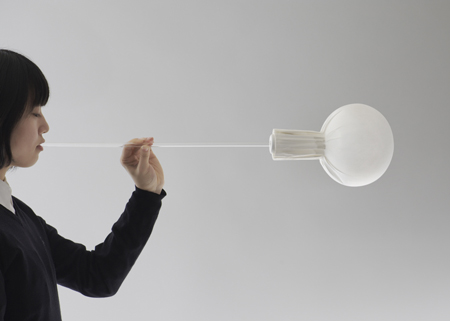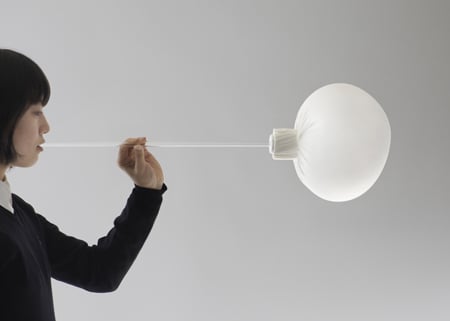
Blown Fabric by Nendo
Milan 09: Japanese designers Nendo will display lighting called Blown Fabric at exhibition Tokyo Fiber ‘09 Senseware in Milan later this month.

The lamps are made of a thermoplastic, non-woven polyester fibre using a process similar to glass-blowing.

LED bulbs in machined, aluminium sockets provide the light source and anchor the light, hollow forms.

Tokyo Fiber ‘09 Senseware takes place 22-27 April at La Triennale di Milano.

Here's some more information from Nendo:
--
“blown-fabric” at La Triennale di Milano
nendo created blown-fabric for Tokyo Fiber ‘09 Senseware, an exhibition intended to convey the possibilities of new materials developed with Japanese synthetic fibre technology.
‘Smash’ is a specialized long-fibre non-woven polyester that can be manipulated into different forms through hot press forming technology.
Because it is thermoplastic, light and rip-proof, but glows beautifully when light passes through it, we wanted to create lighting fixtures in the style of vernacular Japanese chochin paper lanterns with it.
The structure of standard chochin consists of thin strips of bamboo wrapped around a wood frame and strengthened with vertical stitching.
Japanese mulberry paper pasted over the frame completes the lamps, and gives them their characteristic glow. But we realized that Smash’s particular properties would allow us to shape it like blown glass into a seamless one-piece lantern. It is impossible to completely control the process, so each fixture takes a unique form as heat is added and pressurized air blown into it.
As in glass-blowing, we can intervene during the production of each piece, resulting in a collection of objects whose infinitely varied imperfections are reminiscent of the infinite formal mutations of viruses and bacteria in response to environmental changes, and a far cry from the standardized forms of industrial mass-production.
The fixtures are weighted at the base by the light source. This simple, straightforward contrasts with the careful selection of materials.
Smash changes form if the interior temperature rises above 80˚ C, so we mounted low-heat LED bulbs in machined aluminium sockets that double as a heat-sink to maintain a low interior temperature.
2009/4/22(Wed) - 4/27(Mon)
La Triennale di Milano viale Alemagna.
See all our stories from Milan in our special MIlan 2009